What Are The Easiest Berries To Grow? Eating soft fruit from your own backyard is one of life’s great pleasures. There is nothing better than being able to go outside and pick some berries to eat while you are walking around the garden. However, if you are novice gardener wanting to start a berry patch it is best to start out with the things that are easiest to grow.
Of the Berries that can be grown by far the simplest is Autumn fruiting Raspberries. They require very little maintenance, you could get away with literally doing nothing for 2 years and you would still have fruit. The extent of the recommended maintenance is cutting them to the ground with a pair of secateurs at the end of the season. Additionally, they will multiply without intervention from you.
To get started with the Autumn Raspberries you simply need to buy a few canes, which can be purchased from a specialist nursey such as Thompson and Morgan or you can purchase through Amazon. They are typical sold as a bare rooted plant that is available in late winter.
If you are not sure what variety to buy have a look at the how-many-raspberries will one plant produce article, it has a list of high performing varieties that have been tested and certified by the Royal Society of Horticulture in the UK. The top performing Autumn variety is Caroline.
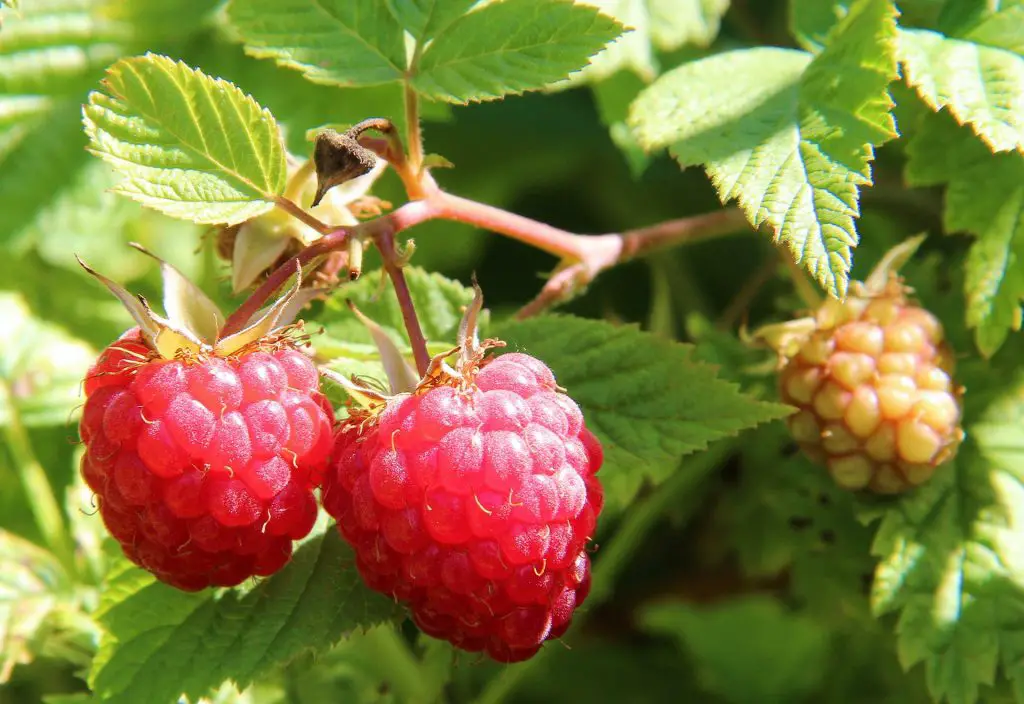
When the plant arrives it will basically look like a dead stick with some fine spindly roots attached, don’t worry it will grow. As soon as the plant arrives plant it in the ground. There is no particular soil preparation that absolutely has to be done. Generally the Raspberries will grow in any reasonable medium, however improving the soil never hurts.
If you want to improve the soil buy a couple of bags of compost from your local nursery and dig them into the soil before planting. It is also recommended that you apply a thick layer (2 to 4 inches thick) of mulch to the soil. This will help retain moisture in the soil and will also prevent weeds from growing.
Once planted you can expect to see new shoots emerge in the Spring, with the canes reaching a height of 3-4 ft in Summer. At this point it may be necessary to support the canes to stop them from flopping around all over the place. It is not absolutely essential that you do this but it does make access the fruit later on easier.
The easiest way to do this is put a couple of stakes in the ground and tie a piece string between them to support the plants. This works well if you have many canes.
Around mid summer you should begin to see the formation of flowers on the canes and the fruit will be ready to pick in Autumn. For most varieties the berries will turn from a pale colour to an increasing deep colour. The deeper the colour the sweeter the berries will become. After picking just a few berries and tasting them you will find that you are easily able to select the ripe fruit by colour.
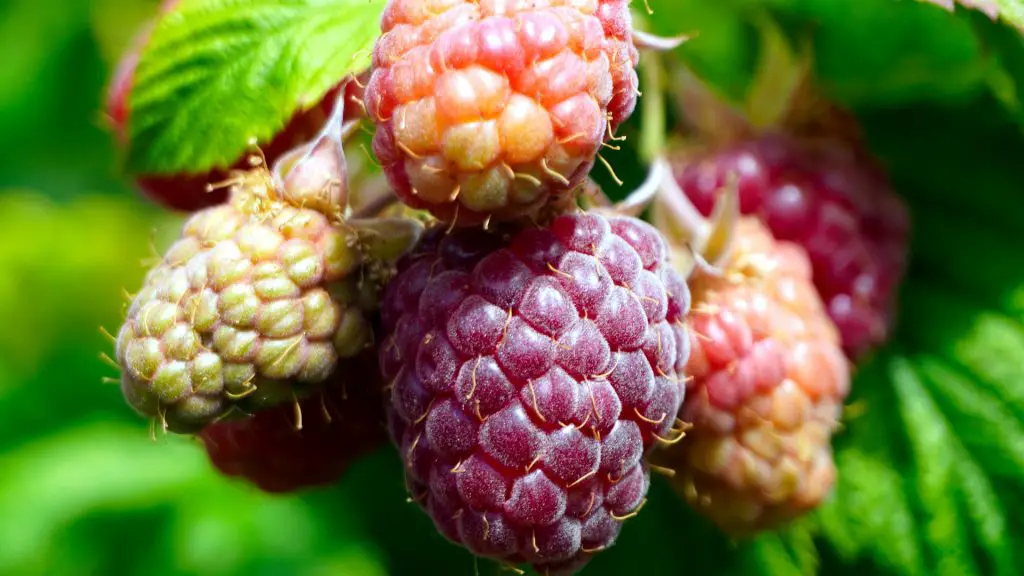
Once the plant starts fruiting make sure you go out and pick them everyday as they will keep producing until frosts start to appear. If you don’t have a use for berries on a particular day freeze them by placing them into a resealable bag which can be continually be added to.
Raspberries Maintenance At The End Of The Season
When fruiting finally finishes the only bit of maintenance you need to do is to cut the Raspberries down to the ground. This does not need to be done immediately, it can be done at any stage through the winter.
If this is not done you will find that the Raspberries canes will fruit the following season however after that the canes, in most cases, will die. However, this characteristic is advantageous because it means you can extend the fruiting season to include Summer as well as Autumn by adjusting your pruning of the plant.
If you cut half the canes down to the ground and leave the other half untouched you will get two flushes of fruit, one in Summer and one in Autumn. The canes that are left from the previous season will fruit in Summer because they do not need to spend the time growing a new cane first before flowering. This results in the fruit being available a few months earlier.
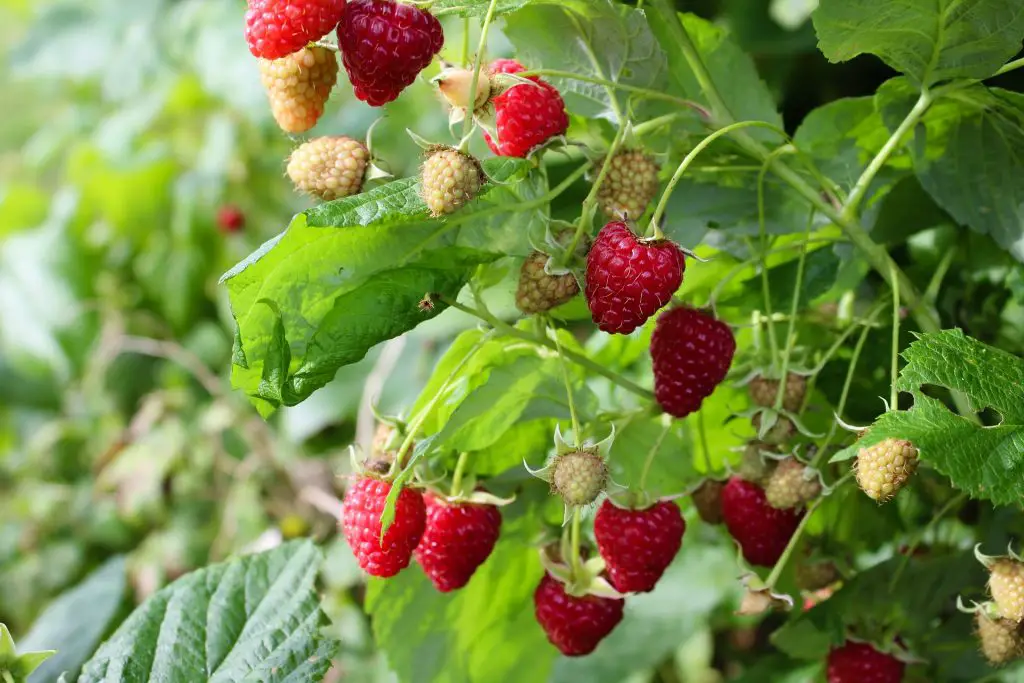
Additionally, when doing your pruning in winter it is a good idea to shift any canes that have popped up in new locations that are not ideal. Raspberries have a running root system that will result in new canes popping up every year. This means that creating new Raspberries requires no special effort, however on the flipside it also means that you will need to regularly remove unwanted plants each year to ensure that they don’t take over your garden.
What About Other Types Of Berries?
While Autumn Raspberries are definitely the easiest to grow there are plenty of other types of soft fruits that you might consider which include;
- Summer Fruiting Raspberries
- Strawberries
- Blackberries (and all the various crosses between Blackberries and Raspberries, ie Loganberries, tayberries etc……)
- Gooseberries
- Blueberries
Summer Fruiting Raspberries
So lets start with Summer fruiting Raspberries. Summer fruiting Raspberries are distinct from Autumn fruiting berries because they fruit on the previous year canes where as Autumn varieties fruit in this years’ canes. Additionally, the canes are much longer than Autumn varieties, up to 3 metres (10 to 12 ft) long.
Due to the length of the canes there is a alittle more work because you need to create a more substantial support structure for them. Additionally, extra time is required to tie the individual canes to the structure. This needs to be done usually 2 to 3 times a year if you want to keep the patch neat. However, the advantage of these types of Raspberries is they generally produce more berries than Autumn fruiting varieties.
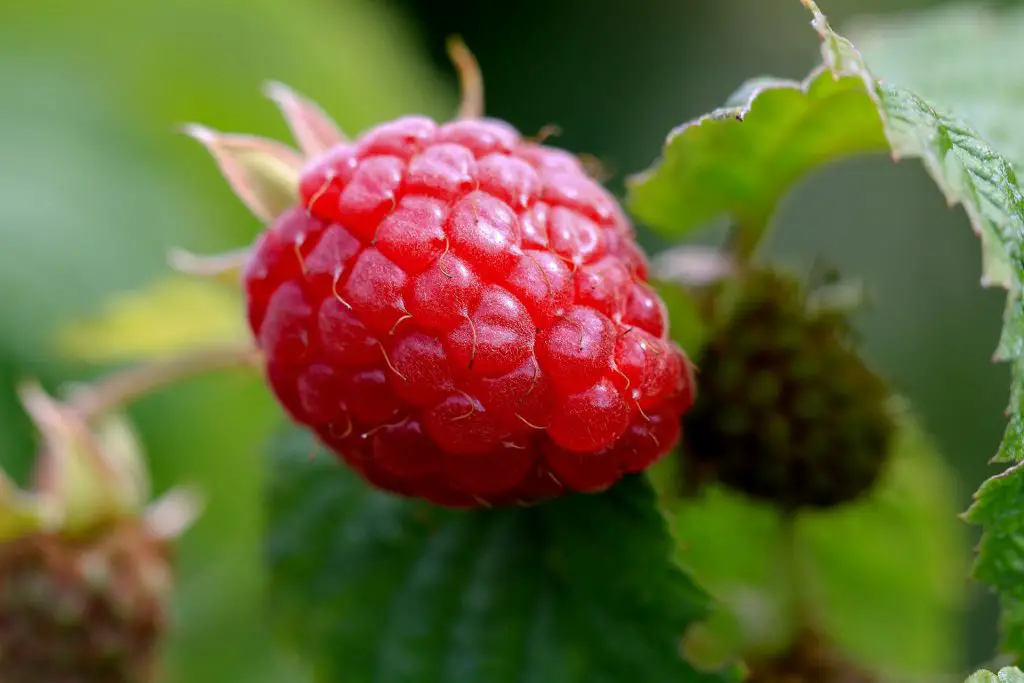
The Royal Society of Horticulture trial showed that the top performing varieties, Tulameen and Glen Magna produced between 12 and 14 kg (26 to 30 lbs) compared to 9.9 kg (22 lbs) for the top performing Autumn variety, Caroline.
Strawberries
Another really popular berry to grow at home is Strawberries, which shows the biggest different in taste between home grown and store brought of any fruit or vegetable. There is a world of difference between the quality and flavour of the fruit.
Strawberry plants are a low growing plant that produces between 0.6 to 1.3 kgs (1.4 to 2.9 lbs) of fruit per plant according to a Purdue University trial. Strawberry plants start producing in mid spring which is a few weeks earlier than the Raspberries and they will sometime provide a second flush of fruit in Autumn.
The plants are available year round in pots however, it is much cheaper to purchase them as bare rooted plants in winter, they are usually around a third of the price of the potted plants.
Strawberries are generally alittle fussier that Raspberries with respect to soil conditions they generally prefer rich soils that have plenty of organic matter added. When planting the strawberries they should be placed 6 inches apart and mulched using a dry material. The mulch conserves moisture and also prevents the fruit from coming into contact with the soil which reduces the chance of them rotting.
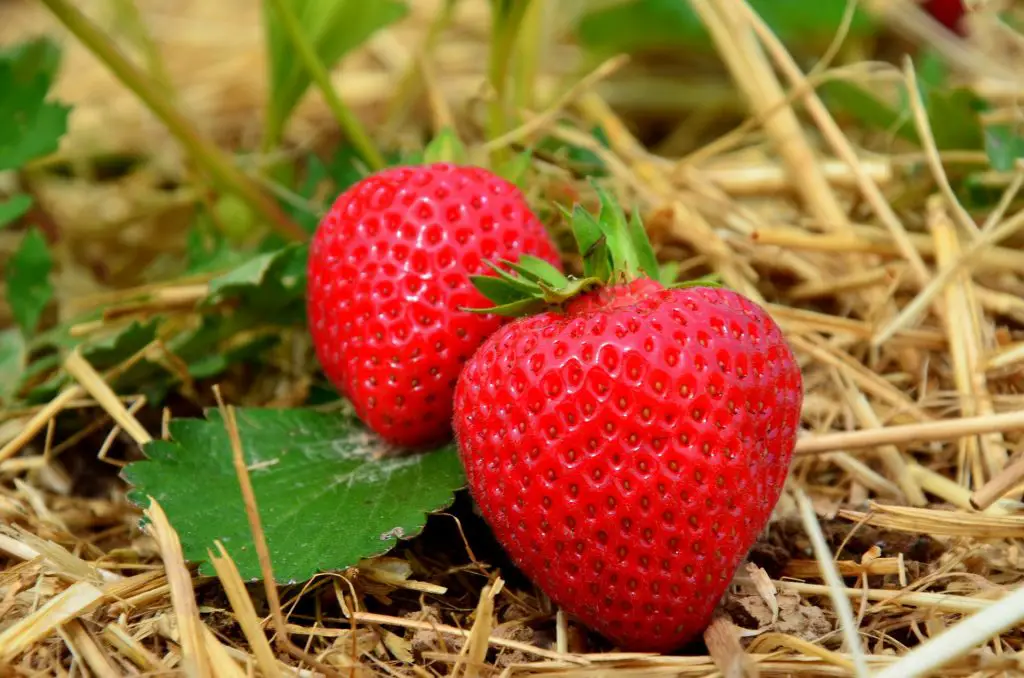
Strawberry plants are most productive for 3 years or so. After that period they will produce significantly less fruit and need to replaced. New plants can be created by ensuring that the runners (long thin shoots produced by the plant) root into the ground. This can be done by pinning the runner to the ground with a weight.
Once the roots of the runner have become established it can be separated from the plant and moved to the desire location. Strawberry plants will produce between two and ten runners per plant each season.
Blackberries
Blackberries have a similar growing habit to summer fruiting Raspberries and therefore have similar requirements. Like Raspberries, Blackberries require a support structure to ensure that you can keep them under control. The support structure needs to be relatively sturdy, something like a trellis, reo mesh or temporary fencing is absolutely idea.
Blackberries are best purchased as a bare rooted plants in winter. They are generally not fussy about soil conditions but benefit from moist soils with plenty of organic matter. Like Summer fruiting raspberries they fruit on the last years’ canes so the canes need to be tied onto the support structure after the first years’ growth.
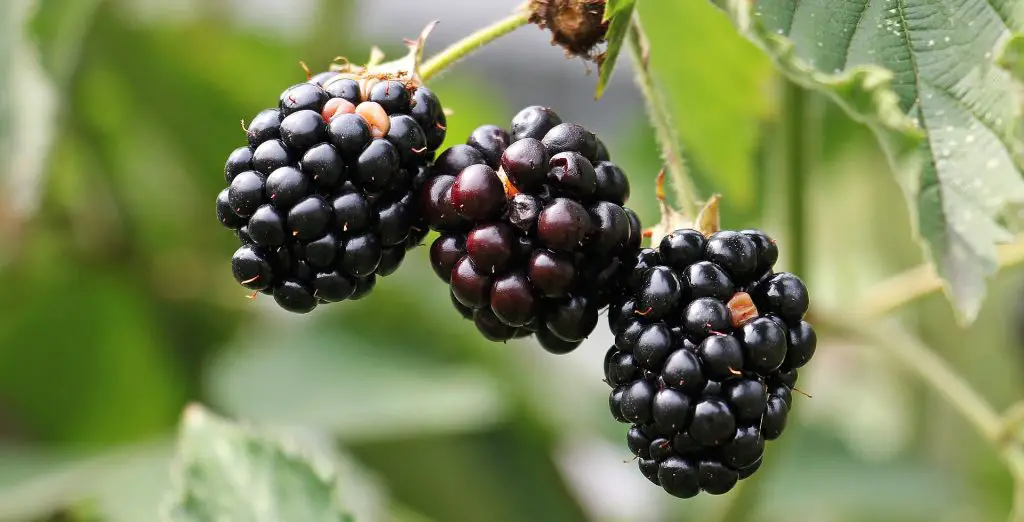
They will then fruit in the summer of the second year after which the canes can be removed to make space for new canes. When selecting a variety to grow in your yard I strongly recommend that you select a thornless variety such as Waldo which is easy to handle. Yield of Blackberry plants range from 5 to 10 kg (10 to 25 lbs) per plant.
Gooseberries
Gooseberries is a deciduous shrub that reaches between 3 to 4 ft in height and produces fruit that is generally quite tart in flavour though there are some sweeter varieties that have been developed. Due to their flavour they are best used to make jam, jellies or tarts. According to the University of Kentucky a plant produces 2.7 kg (6 lbs) on average.
As with all soft fruit it is cheapest to purchased bare-rooted plants in winter for planting in early Spring. When planting bushes in the garden they should be planted 1.5 metres (5 ft) apart.
In the first year of having the Gooseberries it is recommended that the bush be reduced to the strongest three or four shoots with a height of 1 to 2 ft. This will encourage to the plant to develop strong healthy growth. In subsequent years pruning should be done twice a year, once in midsummer and again in late winter.
The Summer prune should aim to remove some of the foliage to ensure that light and air can get to the fruit reducing the chances of problems. The winter prune should reduce the plants size by about a third and remove any weak or crossing branches.
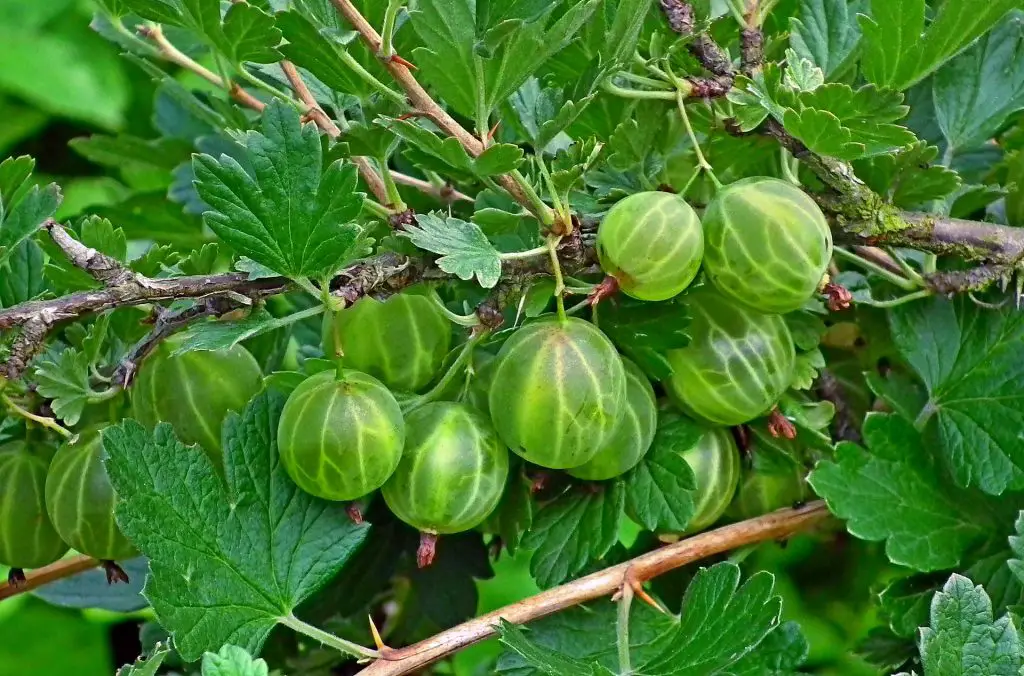
To produce additional plants the easiest way is to take cuttings from the plant in winter when it is dormant. Gooseberry cuttings general root fairly easily allowing your stock to be increased.
However, it is important to note that in some states in the US it has been made illegal to grow Gooseberries due to it being an intermediary host of white pine blister rust. So if you live in the US check the local regulations in your area before considering growing one.
Blueberries
Blueberries, in my opinion, are by the most difficult soft fruit to grow, I personally have killed several of these plants. The main issue that I have had is the pH of the soil and drainage.
A key requirement for growing Blueberries is the pH of the soil needs to be fairly acid, around a pH 4 to 5.5, which is lower than most other plants. To achieve this pH spent coffee grounds and pine needles may be used. The pine needles, in particular, are highly suitable as they mimic the plant’s natural environment, Blueberries evolved in the forests of North America. Alternative, sulphur may be used but it will take alittle time to be effective as it needs to convert to sulfuric acid.
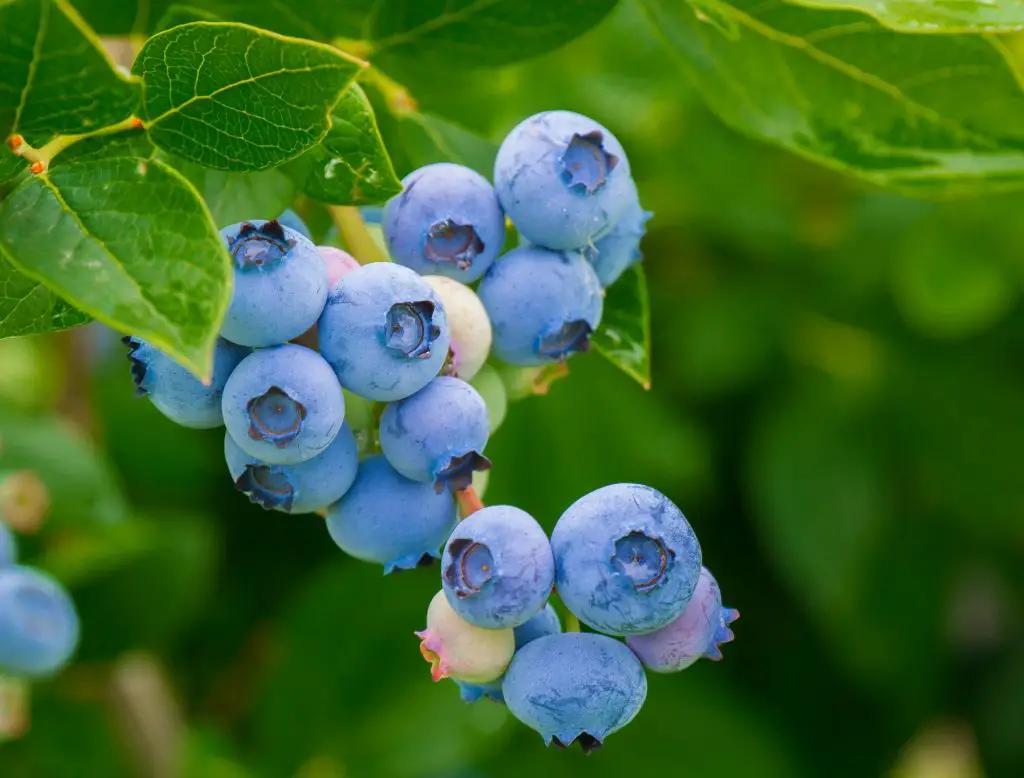
Irrespective of the acidify agent that is used it is critical that pH falls into the preferred range. To check this it is best to use a pH meter rather than pH strips as they can be alittle subjective. The one I recommend you use is the “Dr Meter Moisture, Light and pH meter” as it required no batteries, is able to measure soil moisture as well and is relatively inexpensive to buy. Click here to check the price on Amazon.
The other thing to avoid with Blueberries is soggy soils. If you are in an area where the soil is relatively wet you can mounded up the soil to evaluate the plant to improve drainage.
Once the plant is established you can expect to get around 4 kg (8 lbs) of fruit per season. They normally fruit in late summer to early Autumn.
Conclusion
When starting a soft berry patch at home start with the easiest and highest yielding fruit to grow, Autumn Raspberries. However, to ensure that you can extend the harvest period from late Spring through to Autumn make sure you also get a Strawberry patch going as they will produce the earliest fruiting berries.
